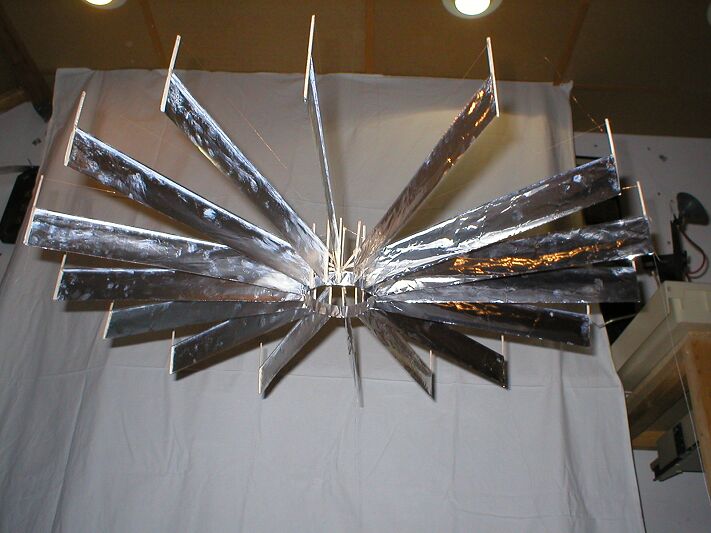
The
Radial Lifter
by
Marco Van Rees
created on
April 4, 2003 - JLN Labs -
Last update April 4, 2003
All informations in this page are published free and
are intended for private/educational purposes and not for
commercial applications
|
|||||||||
| Envoyé via Internet | |||||||||
Good morning,
I send you some photos of again another lifter type. I call it a
Radial lifter.
My purpose of this shape is not only to hopefully preserve the
maximum effect of the single lifter element but also to create an
asymmetry in the total field from the centre of the lifter to the
outer circle. The shape also supports a high density structure by
adding one or more circles to the structure (for example: the
second ring is half imbedded in the first, the thirt into the
second, etc.)
There is also another purpose of the radial shape of the lifter.
It is a way of introducing the concept of a rotating electric
field into the lifter system. By circulair “powering” off-on
each element after the other there will be created a rotating
electric field . Fact is that I cannot say that this will benefit
to the performance of the lifter but even though it is
interesting to experiment with. At this moment however I still
use the plain old high voltage static 25 Kv DC. There needs to be
done some work in designing and building a proper power supply
with several channels that can be switched separately to support
the rotating system.
Back to basics:
The problem of all the above is of course that the ideas are
mainly based on vague assumptions and intuition on how the field
is formed. There’s only one thing that looks obvious: the more
asymmetry in the field shape the better the effect is.
In fact, it would help to see what the field shape is in reality.
I am not sure that the field simulators that I saw on the net are
really of any help (do they fully comply with the real shape of
an asymmetric field?). To my opinion some extra effort needs to
be done in researching the field shape in order to understand
really the Biefeld Brown effect so we can use it in a more
effective way.
At this point I like the practical approach rather then the
theoretical
To start with a single lifter element. I am still into the
process of thinking over how to visualise the field around it.
Good suggestions are of course welcome.
With best regards
Marco van Rees

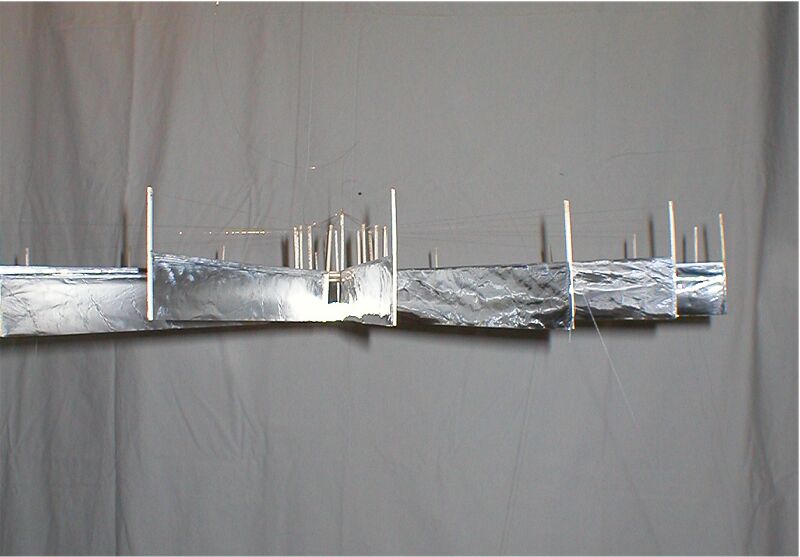
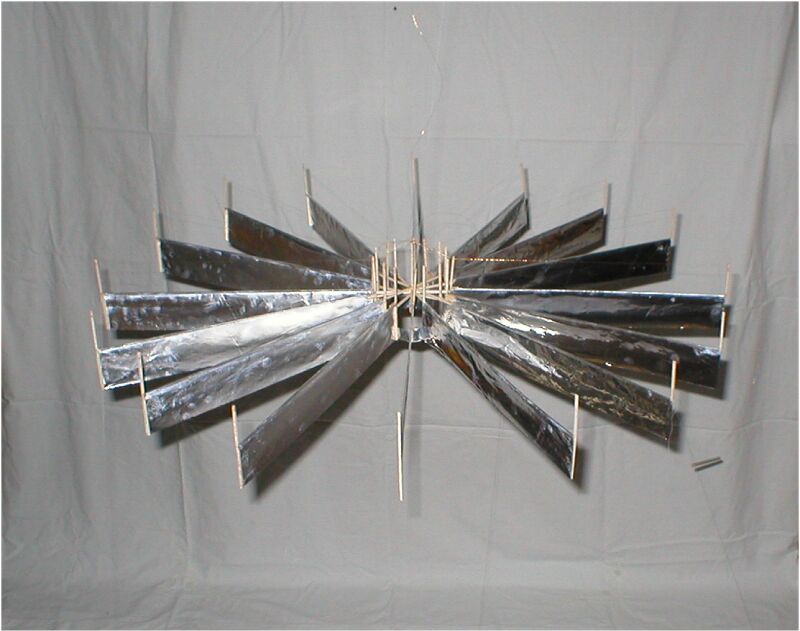
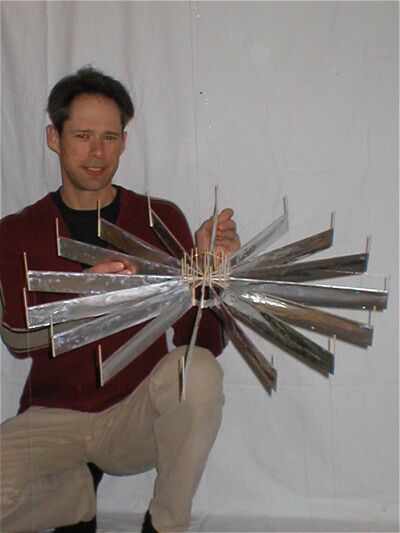
See also the :
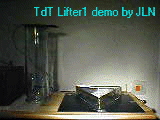 Lifters builders
and tests feed-back
Lifters builders
and tests feed-back ![]()
Return to the Lifters Builders page